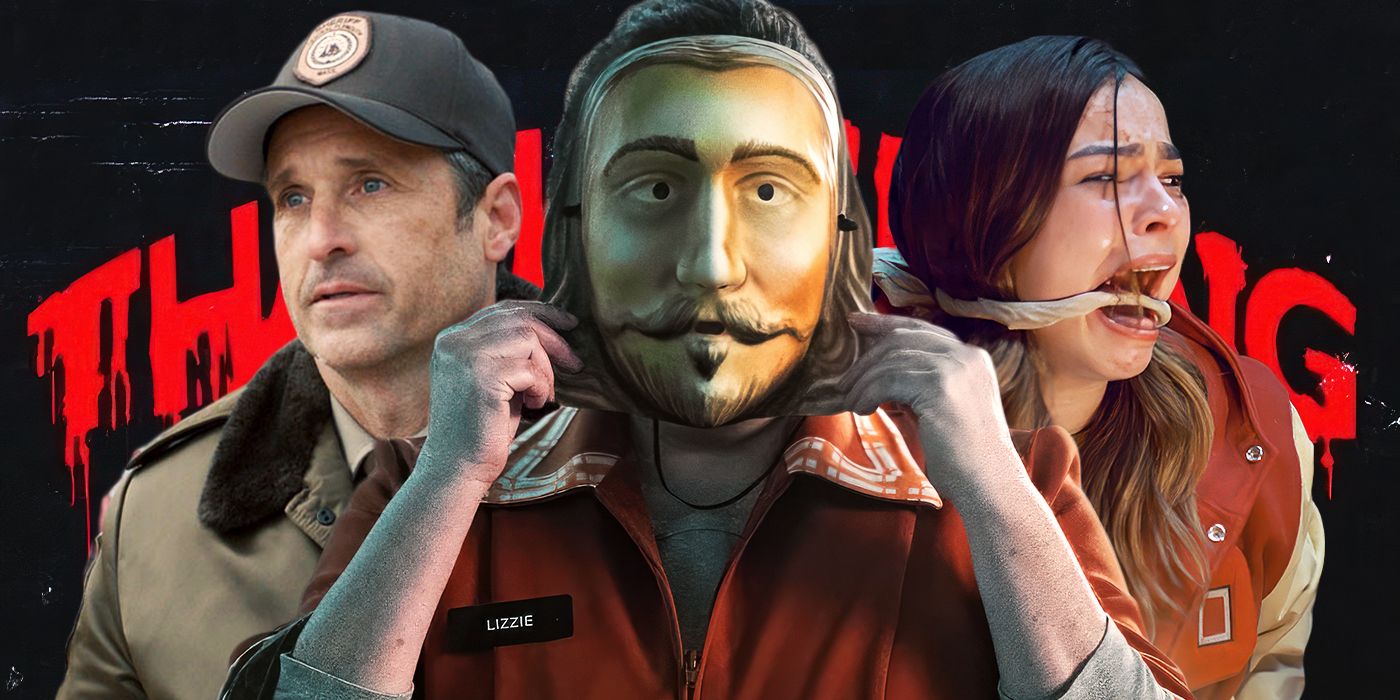The Big Picture
- Horror tropes provide a sense of comfort and protection while still delivering scares. They remind us that what we’re watching is just a movie and allow us to feel in control.
- Tropes like creepy kids and cursed objects continue to be effective because they tap into our primal fears. They trick our brains with the contrast between innocence and evil, and the mystery they present.
- The final girl trope in slasher films is predictable but necessary. It removes the fear by guaranteeing the defeat of the killer, but also takes away some of the suspense and tension that makes horror movies frightening.
What would horror be without its tropes? When we watch scary movies, we want just that — to be scared — but we also need that protection from reality. The horror can’t be too real to the point of traumatizing, because if it were, we wouldn’t be tuning in. Horror is a therapeutic experience for many, after all, a rollercoaster ride that helps relieve our anxieties. We want to scream and jump, but with a laugh after because we know we’re okay.
Tropes help to tell us that what we’re watching is just a movie. We might be afraid of what we’re seeing on the screen, but that little bit of predictability is a warm blanket to wrap ourselves in. If we feel in control, then the horror can’t control us. So many tropes, like jump scares, work for fans, even if we’ve seen them a hundred times, but one trope that is never scary is the final girl in a slasher film. Once you get to the third act of a slasher, and the shy, virginal hero is the only victim remaining, you know everything is going to be okay. While that final showdown between the hulking killer in a mask and the final girl can be fun and thrilling, there is nothing to be afraid of. We don’t need to be worried about her. It’s the killer who needs to be scared now, because he’s about to die, at least for the time being.
The Horror Genre Has Some Scary if Overused Tropes
Horror tropes might be predictable, but that doesn’t mean they can’t still be scary. A trope acquires its status because of its repeated effectiveness. How many movies have you seen with creepy kids? There have been a plethora of them, but they still work. From The Bad Seed, to the creepy kids in The Shining, to the evil kids in this year’s There’s Something Wrong With the Children, the trope still works on audiences because of that polar opposite of a small, innocent child contrasted with pure evil. The two shouldn’t go together, so it will always trick our brains. It’s the same with our fear of dolls, from Child’s Play to Annabelle, and everything before and in between. A face that looks human but isn’t always brings out a primal fear in our collective conscience.
The abandoned house trope still works because who knows what could be in this mysterious place around the next corner. The curse trope, where a character encounters a cursed VHS tape, book, or object, such as in the Evil Dead films, will always be effective because, again, of that mystery. What horror could lurk in these objects? Some tropes are even laughed at by fans, like anytime characters decide to separate and go out on their own, leaving someone to investigate a dark and creepy place all alone, but there’s a reason why Hollywood keeps doing it: because it works! Half a dozen people together seeking out a malevolent force isn’t as frightening because the odds are increased that evil will be defeated, but put a protagonist on their own and the suspense goes through the roof because there’s now a good chance this person isn’t making it out alive.
The Final Girl Always Defeats the Villain in a Slasher
No horror subgenre has more tropes than a slasher flick. Just watch Wes Craven‘s Scream and listen to Randy Meeks (Jamie Kennedy) go on his rant on how to survive a horror to get a crash course if you’re not familiar. In a slasher film, if anyone says, “I’ll be right back” when leaving a room, they won’t be. In a slasher, a character is for sure running up the stairs away from the killer instead of out the door. Phones suddenly won’t work and perfectly good cars won’t start either. If any characters have sex or do drugs, kiss their butts goodbye.
Then there’s the greatest and most used slasher trope of all: the final girl. For the first two acts of a slasher, the killer will easily dispatch of any victim (usually a teenager) in their way, until only one remains. We’re introduced to the final girl early on. Among the teens concerned only with knockin’ boots and getting high is the serious girl. She’s usually very smart, shy, emotionally damaged (a dead mother usually does the trick), and is often a virgin. Some of the greatest characters in horror history are final girls. In the Halloween franchise, Jamie Lee Curtis‘ Laurie Strode is just as popular as Michael Myers. Heather Langenkamp‘s Nancy Thompson became an icon for her battle against Freddy Krueger in A Nightmare on Elm Street. And up until the latest film, it was Neve Campbell‘s Sidney Prescott taking down Ghostface in the Scream movies. For the Friday the 13th series, we got a new final girl every single time for twelve straight movies. They might not have become as iconic as the returning final girls, but they still filled their role perfectly.

This Is What Puts ‘Thanksgiving’ Way Above Other Slashers
‘Thanksgiving’ learned from what makes the Scream movies so beloved.
When a slasher is down to just the killer and the final girl, we know what will happen next. Every single time the killer will be defeated by this girl. While all of her friends stood no chance against the guy in the mask, the final girl, through her smarts, bravery, or just sheer luck, is able to beat the bad guy, sometimes for good, or at least long enough for the end credits to roll. It’s a predictable trope but also a necessary one. Evil must always die, and it has to be at the hands of the ultimate good. While that is fulfilling, it also sucks the fear out of something meant to scare us.
The Predictable Ending of a Slasher Removes the Fear
A slasher can do everything right by introducing characters we truly care about, giving us a horrifying killer, followed by some nail-biting suspense and gory kills, but no matter how successful a slasher can be in scaring us, the tension fades with the closing moments of the chase involving the final girl. Fading tension doesn’t mean it can’t be fun and thrilling, but it’s no longer scary because we know the final victim is going to make it and that the killer is going to be defeated. There’s nothing to be afraid of when we know who is going to win and lose.
What’s worse is how a slasher film has to make this happen. For two-thirds of a slasher, a killer like Michael Myers, Jason Voorhees, or Ghostface is unstoppable. They slay everyone in their path with ease, even going so far as to build elaborate traps or display their victims in grotesque ways. The best of slasher killers also seem to have the ability to teleport, which is another overused trope. No matter how fast and how much of a head start a victim has running through the woods, the slowly walking killer somehow always catches up. Slasher villains are damn near supernatural, even if not explicitly stated. When they meet the final girl, however, it all falls apart. For example, look at Halloween. It’s arguably the greatest slasher ever, but when Michael Myers begins chasing Laurie Strode in the climax, he suddenly can’t do anything right. When he tries to stab Laurie on a landing, he misses, just grazing her arm. When Laurie runs across the street, he is slow at following her, when he could’ve had her immediately. When he pops up from behind a couch, his knife misses again. Laurie is able to stab him with a sewing needle, a clothes hanger, and his own knife, making him look like an amateur, rather than a guy with a perfect record at dispatching his victims.
This happens all the time in Friday the 13th movies. Jason Voorhees can take anything you throw at him as if he’s unkillable, but put him up against a heroic teenage girl, and suddenly he comes across like a newbie. It can turn the killer from someone to be feared to someone to laugh at. The killer, who is so much stronger, is outwitted and outmuscled. They turn into doofuses ready for their death scene, rather than something to be feared. Where so many horror tropes are rooted in fear, the final girl trope finds its roots in safety. She tells us everything is going to be okay. There’s nothing scary about that.










